
" His Kind of Heroes "
Bruce Springsteen:
His Kind of Heroes, His Kind of Songs
By JON PARELES
New York Times
July 14, 2002
A few days after Sept. 11, Bruce Springsteen was pulling out of a beach parking lot in
the Jersey Shore town of Sea Bright when a fan rode by. The man rolled down his windo
w, shouted, "We need you!" and drove on. It was the kind of moment, Mr. Springsteen
said, that made his career worthwhile. "That's part of my job," he said. "It's an honor
to find that place in the audience's life."
"The Rising" (Columbia), 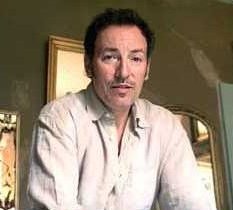 Mr. Springsteen's first album of new songs with the E Street
Band since 1987, is due for release on July 30. It continues the reunion with the E
Street Band that began with a few songs in 1995. Yet it barely looks back.
By changing producers for essentially the first time since 1975, Mr. Springsteen has
recast the sound of his music. For him, at 52, the album represents a rediscovery of the
rock voice that he feared he had lost.
Mr. Springsteen's first album of new songs with the E Street
Band since 1987, is due for release on July 30. It continues the reunion with the E
Street Band that began with a few songs in 1995. Yet it barely looks back.
By changing producers for essentially the first time since 1975, Mr. Springsteen has
recast the sound of his music. For him, at 52, the album represents a rediscovery of the
rock voice that he feared he had lost.
Most pop stars seemed irrelevant immediately after Sept. 11. Mr. Springsteen, who
has spent most of his career singing about American dreams and disappointments, did
not. With the red-white-and-blue iconography of "Born in the U.S.A." (which was
anything but a nativist anthem) and in the accumulated narratives and sounds of his
songs, he had made himself rock's all-American good guy, loyal but never complacent
about his country. He had become a symbol of blue-collar pride, sympathy for the
underdog and rock with a clear conscience.
His job, he decided a quarter-century ago, was not to embody some rock-star fantasy
but to recognize the dignity of ordinary work. "I felt that I saw nobility in people," he
said in a rare interview at his farmhouse home. "Not the kind you read in the story
books, but the kind where people go in to work every day, they come home every day
and dinner's on the table every day. There's people doing this in little ways every day
all the time. These are the people that I want to write about. This is what I think is
important. That's what moves me. That's what makes me want to sing my song."
"After the 11th," he said, "I think one of the things people were shocked at was that
that was alive in some fashion. I think that we live in a particular pop culture moment,
that there's a theater of humiliation on TV and on the radio, a reflection of self-loathing.
I don't think anyone could imagine these sacrifices."
The office workers, firefighters, police and air travelers who died on Sept. 11 were the
stuff of Springsteen songs: people who became heroes by just doing their jobs. He
sings about them, and their survivors, on "The Rising," a song cycle about duty, love,
death, mourning and resurrection.
"The Rising" provides comfort without flinching from sadness and bitter fury. In a way
the 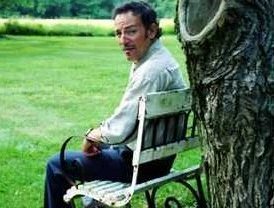 album brings together the topics that have occupied Mr. Springsteen for two
decades: work and love. The 15 songs are filled with characters who have lost their
closest companions. "I want a kiss from your lips/ I want an eye for an eye," Mr.
Springsteen sings in "Empty Sky." Grief wrestles with perseverance; come-ons arrive
with intimations of mortality. In the album's title song, "The Rising," one man's
afterlife is an endless longing for the physical touch of those left behind, and the
music climbs toward jubilation as an act of will. The repercussions of Sept. 11
permeate the songs, but there is no jingoism or self-righteousness, just individual
stories from all sides; the narrator who opens one song, "Paradise," is a suicide
bomber of unspecified nationality.
album brings together the topics that have occupied Mr. Springsteen for two
decades: work and love. The 15 songs are filled with characters who have lost their
closest companions. "I want a kiss from your lips/ I want an eye for an eye," Mr.
Springsteen sings in "Empty Sky." Grief wrestles with perseverance; come-ons arrive
with intimations of mortality. In the album's title song, "The Rising," one man's
afterlife is an endless longing for the physical touch of those left behind, and the
music climbs toward jubilation as an act of will. The repercussions of Sept. 11
permeate the songs, but there is no jingoism or self-righteousness, just individual
stories from all sides; the narrator who opens one song, "Paradise," is a suicide
bomber of unspecified nationality.
Despite their somber subjects, the songs still find the possibility of pleasure and a
recurring hope that there's a way to rise above suffering. The music maintains the E
Street Band's reassuring solidity, built on the drummer Max Weinberg's steadfast
march beats, Garry Tallent's bass lines and the heft of three guitars and two keyboards,
along with Clarence Clemons's soul-band saxophone. Mr. Springsteen often follows a
songwriting strategy that dates back to songs like "Badlands," with verses full of travail
and choruses that ring with optimism. "The verses are the blues, the chorus is the
gospel," he said in the interview.
"You have to come to grips with the real horrors that are out there," Mr. Springsteen
continued.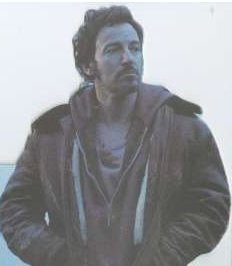 "And then all people have is hope. That's what brings the next day and
whatever that day may bring. You can't be uncritical, but just a hope grounded in the
real world of living, friendship, work, family, Saturday night. And that's where it
resides. That's where I always found faith and spirit. I found them down in those
things, not some place intangible or some place abstract. And I've really tried to
write about that basic idea my whole life."
"And then all people have is hope. That's what brings the next day and
whatever that day may bring. You can't be uncritical, but just a hope grounded in the
real world of living, friendship, work, family, Saturday night. And that's where it
resides. That's where I always found faith and spirit. I found them down in those
things, not some place intangible or some place abstract. And I've really tried to
write about that basic idea my whole life."
Mr. Springsteen lives with his wife (and E Street Band backup singer), Patti Scialfa,
and their three children in a 19th-century farmhouse in Monmouth County. It's
surrounded by former corn and soybean fields that will, in the next few growing
seasons, be converted to organic crops; a barn holds a demo studio. Mr. Springsteen's
wood-paneled living room, where he has also done some recording, has a large
fireplace with antique clocks on the mantelpiece and a comfortable assortment of
Arts and Crafts furniture and stuffed chairs. Wearing a pale shirt, corduroy pants, black
boots and a St. Christopher medal — the former patron saint of travelers no longer
recognized by the Roman Catholic Church, disenfranchised like a Springsteen
character — Mr. Springsteen sipped a beer and spoke proudly about "The Rising."
"I've been at my best when I'm connected to what's going on in the world outside,"
he said. "I have a sense of what my service to my audience is going to be. It's the true
nature of work in the sense that you're filling a place. And that place comes with its
blessings and its responsibilities."
By Sept. 21, when musicians and actors shared a hushed all-network telethon for the
September 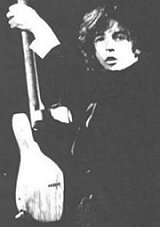 11th Fund, Mr. Springsteen had written a song called "Into the Fire" for
the program; it's about someone who disappeared "upstairs into the fire," and it turns
from memories to a benediction: "May your strength give us strength/ May your hope
give us hope." Mr. Springsteen didn't consider it finished enough for prime time;
instead, he sang "My City of Ruins," a song written before Sept. 11 about a devastated
city and the determination to "rise up." Within a week, he had also written "You're
Missing," an elegy rooted in the everyday, and "The Fuse," about loss and desire.
All four songs appear on "The Rising."
11th Fund, Mr. Springsteen had written a song called "Into the Fire" for
the program; it's about someone who disappeared "upstairs into the fire," and it turns
from memories to a benediction: "May your strength give us strength/ May your hope
give us hope." Mr. Springsteen didn't consider it finished enough for prime time;
instead, he sang "My City of Ruins," a song written before Sept. 11 about a devastated
city and the determination to "rise up." Within a week, he had also written "You're
Missing," an elegy rooted in the everyday, and "The Fuse," about loss and desire.
All four songs appear on "The Rising."
"Into the Fire" and "You're Missing" became what Mr. Springsteen called "genesis
songs": they triggered others. "I'd come up with one and that would lead to another
and lead to another and lead to another. Then you start to tell a story. And finally the
story begins saying, `I'd like this emotional ground covered or that emotional ground
covered.' What's the rest of the story?"
"You're mining, soul mining," Mr. Springsteen added. "And sometimes you're just not
around the rich veins, and a long time can go by. And then all of a sudden, boom!
You hit one."
On a table sat a blue spiral-bound Mead notebook, with a handwritten label reading
"Work Book"  and a sticker with a picture of an eagle from Exile Cycles, a custom
motorcycle builder in Sun Valley, Calif. It held, in its handwritten pages, the making
of "The Rising," starting with a page of potential song titles, including keepers like
"Into the Fire" and nonstarters like "Hard Drive." Then came draft after draft of lyrics,
a few dead-ended songs and, eventually, finished lyrics with notes on arranging
and mixing. The last pages are sequences of songs for the finished album.
Mr. Springsteen has stacks of these books; after all, he has been making albums for
Columbia for 30 years.
and a sticker with a picture of an eagle from Exile Cycles, a custom
motorcycle builder in Sun Valley, Calif. It held, in its handwritten pages, the making
of "The Rising," starting with a page of potential song titles, including keepers like
"Into the Fire" and nonstarters like "Hard Drive." Then came draft after draft of lyrics,
a few dead-ended songs and, eventually, finished lyrics with notes on arranging
and mixing. The last pages are sequences of songs for the finished album.
Mr. Springsteen has stacks of these books; after all, he has been making albums for
Columbia for 30 years.
He made his reputation as a bar-band trouper inventing an irresistible persona: the
scruffy, romantic Jersey guy who loved girls, cars and the possibility of escape. After
he became a national figure with "Born to Run" in 1975, he turned to bleak parables
and songs about other people: the runaway husband in "Hungry Heart," the hard-luck
prisoner in "Johnny 99," the shattered Vietnam veteran in "Born in the U.S.A." and
more recently the AIDS patient in "Streets of Philadelphia."
"I felt like maybe I had played out my story kind of early on," Mr. Springsteen said.
"There wasn't any place to go. The classic, the sort of iconic rock story was those early
records."
So he chose to write about the unglamorous workaday world. "I thought that once
again I could be of value and have something that would be worth saying and give
people a good time," he said. "I've always felt, I just write well about these things.
Those elements are where the blood and the grit of real life mixes with people's
spiritual aspirations and their search for just, decent lives."
His 1982 album "Nebraska," 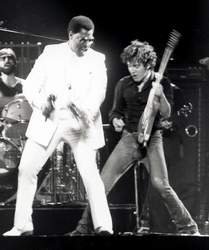 originally intended as four-track demo recordings on
cassettes, told desolate stories in raw, low-fi form. Then he hit his mass-market peak
with "Born in the U.S.A." in 1984, an album of chiming, gleaming songs about the
people left behind by Reaganomics. His songs on albums like "Tunnel of Love"
turned inward, pondering love gone wrong. His first marriage, to the actress Julianne
Phillips fell apart; he also decided to part ways with the E Street Band.
originally intended as four-track demo recordings on
cassettes, told desolate stories in raw, low-fi form. Then he hit his mass-market peak
with "Born in the U.S.A." in 1984, an album of chiming, gleaming songs about the
people left behind by Reaganomics. His songs on albums like "Tunnel of Love"
turned inward, pondering love gone wrong. His first marriage, to the actress Julianne
Phillips fell apart; he also decided to part ways with the E Street Band.
After marrying Ms. Scialfa in 1991, the year after his son Evan James was born, he
took up storytelling again, but with a new austerity. For "The Ghost of Tom Joad" in
1995 he set tales of workers and immigrants to quiet, folky guitar. He toured alone,
playing an acoustic guitar. And he wondered if he would ever rock again.
"I was having a hard time locating my rock voice," he recalled. "I knew I didn't want
it to be what it was, but I didn't know . . . " He trailed off. "I'd made some records over
the past years, I made one in '94 that I didn't release. Then I made a series of demos,
kind of in search of that voice. And I was having a hard time finding it. And there
was a point I said: `Well, gee, maybe I just don't do that now. Maybe that's something
that I did.' "
Getting back together with the E Street Band, first to record three songs for his
1995 "Greatest Hits"  collection and then for a world tour that began in 1999, changed
his mind. He realized he missed arena-scale rock. "Outside of the ego gratification
of thousands chanting your name, and screaming for you," he said with a smile,
"it's also something where you go, `Man, I spent a long time learning how to do this
really well, and am I just going to say that's not for me? I don't think so.' And that's
what people ask for. They want you to come out and do it for me one more time.
While you could say on one hand that's kind of an unreasonable question, on the
other hand, is it really? That's kind of why you've set yourself up.
collection and then for a world tour that began in 1999, changed
his mind. He realized he missed arena-scale rock. "Outside of the ego gratification
of thousands chanting your name, and screaming for you," he said with a smile,
"it's also something where you go, `Man, I spent a long time learning how to do this
really well, and am I just going to say that's not for me? I don't think so.' And that's
what people ask for. They want you to come out and do it for me one more time.
While you could say on one hand that's kind of an unreasonable question, on the
other hand, is it really? That's kind of why you've set yourself up.
"And then on the tour I wrote a couple of songs, `Land of Hope and Dreams' and
`American Skin,' " he said. "And these were as good as any songs like this that I've
ever written. It was like, there's that voice I was looking for."
While "The Rising" reconvenes the E Street Band, it also shakes up the way Mr.
Springsteen has made albums since the early 1970's, when he began producing
them with his manager, Jon Landau, and then his engineer, Chuck Plotkin, and the
E Street Band's guitarist Steve Van Zandt. He made "The Rising" with Brendan O'Brien,
the Atlanta-based producer, who has worked with Pearl Jam, Korn and Rage Against
the Machine.
"My own abilities, I felt like I had reached my limits with them," Mr. Springsteen said.
"The basic sound of things that you hear on the radio changes at least every five to 10
years. Brendan had all my references so I could refer back to something from 1966 or
1980. And then he had the following 10 and 20 years."
While many of the songs use Mr. Springsteen's favorite opening chords — the
major-to-relative minor change that pervades doo-wop — Mr. O'Brien subtly
reconfigured the E Street Band. He brought guitars forward instead of keyboards,
found ways for Mr. Springsteen to sing without shouting and slipped a country fiddle
or a gospel choir into some arrangements.
The songs reach back to rural blues ("Into the Fire") and roadhouse rock ("Further on
up the Road"), 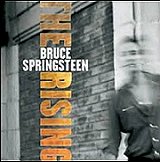 or they might use tape-looped drums alongside pealing, U2-style guitar
("The Fuse"). In "Worlds Apart," a soldier in what could be Afghanistan falls in love
with a local woman; the song mixes the E Street Band with a Pakistani group that
sings qawwali, mystical Islamic songs. When the E Street Band sounds most like its
old self, in "Mary's Place," it's for a song about returning to a familiar haunt, with
lyrics that also hint at Mr. Springsteen's delight in his old band: "Familiar faces all
around me," he sings.
or they might use tape-looped drums alongside pealing, U2-style guitar
("The Fuse"). In "Worlds Apart," a soldier in what could be Afghanistan falls in love
with a local woman; the song mixes the E Street Band with a Pakistani group that
sings qawwali, mystical Islamic songs. When the E Street Band sounds most like its
old self, in "Mary's Place," it's for a song about returning to a familiar haunt, with
lyrics that also hint at Mr. Springsteen's delight in his old band: "Familiar faces all
around me," he sings.
"They had protected me when it got to a place where everything was kind of hot and
there was a lot of light on you," he said. "I carried with me my own sense of place
and my own sense of home in those guys. And I think vice versa. This is what my
band is built for. We're built better for, I think, when the cards are down. We're most
useful in some fashion. So I think that it's just the old story: It's nice to have a job to
do."
New York Times Audio Interview

The Rising!!
Tour Info!!!
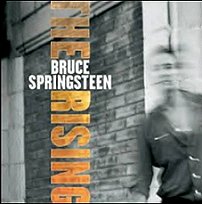
Order "The Rising"!!
Order the Limited Edition Version
Order the Single
Read about The Rising
The Rising Lyrics
Listen to the Rising
The Rising 2002-2003 Tour
His Kind of Heroes
Reborn in the USA
Rolling Stone
Ghost of Bruce Springsteen
